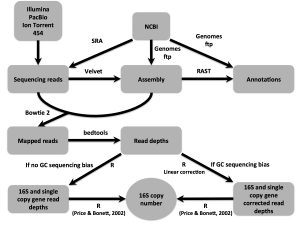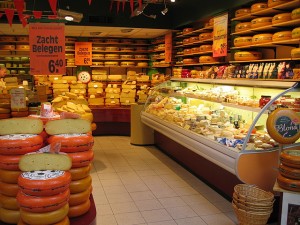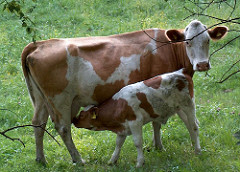A recent study from Meadow et al at the University of Oregon looked at the individual microbiota that humans shed into their surrounding environment. They sequenced the airborne microbes that colonized a sterile chamber once each individual entered. They found that this left a microbially distinct and detectable signature, much like a fingerprint, after 1.5-4 hours. …
In scientific manuscripts, we tell stories of our research, generally in straight-line fashion with clear motivations and results. This type of research is rare (in my experience), with stories, motivations, and applications only realized post hoc. This is the nature of science, and our recent ISMEJ publication is no different. With “16Stimator: statistical estimation of …
Cheese has often been studied as a microbe-rich environment. The variety of interactions in one of the tastiest foods on earth (personal opinion) is still only just being discovered. A recent paper from Stellato et al attempts to study these interactions by swabbing and sequencing the food itself and the various surfaces it comes into contact with during the …
A new open access paper in Frontiers in Microbiology looked at the microbial communities found on buildings of the Auschwitz concentration camp in Poland. I’m currently travelling, so I only have time to post the abstract here. One Hundred Years by The Cure, a song about war and destruction, seemed a good choice for this post. …
A new PLoS One article from Dorado-GarcÃa et al. on the effectiveness of certain countermeasures to antimicrobial resistance shows some encouraging results. The study used MRSA levels as a positive indicator for antimicrobial resistance in Dutch veal farms. There were three methods of reducing MRSA levels in the farms that were studied: one program used protocol-driven methods, one used …
I’m enjoying making maps of participants for kittybiome, a new participatory research project on the microbiome of cats. It was very easy to make this map using Google Maps. (And using Google Maps is particularly appropriate for the project because we have a celebrity cat named NDA, who lives with inventor of Google Maps participating in the project.) Here …
Mental health and its possible relation to the microbiome is a controversial topic in today’s news. Here’s new research suggesting that schizophrenia may be linked to the oropharyngeal microbiome, as the study found “high-level differences” in bacteria of people diagnosed with the disorder and of those without. If true, this could add insight into the …
What’s that cool structure in that UC Davis research field? It’s an egg mobile! Egg mobiles are exactly what they sound like — a mobile chicken coop that can be towed to a different location, such as a different area of a pasture. There are nestboxes and roosts inside for the egg-laying chickens; they also have …
So – I keep getting asked about this. I am looking for how people are doing DNA extractions from 1000s of samples. Some questions 1. What are the cheapest service providers out there for doing DNA extractions from 1000s of samples? 2. What would be the best way to do this oneself? That is, if you were …
The University of Oregon published this announcement on AAAS’ EurekAlert: Oregon architecture researchers to study indoor air quality in 72 homes. So a good song to play while reading this post would be: “Portland, Oregon” ‌‌by Loretta Lynn & Jack White. The press release starts off with a short summary of this project: University of Oregon researchers and industry partners …



